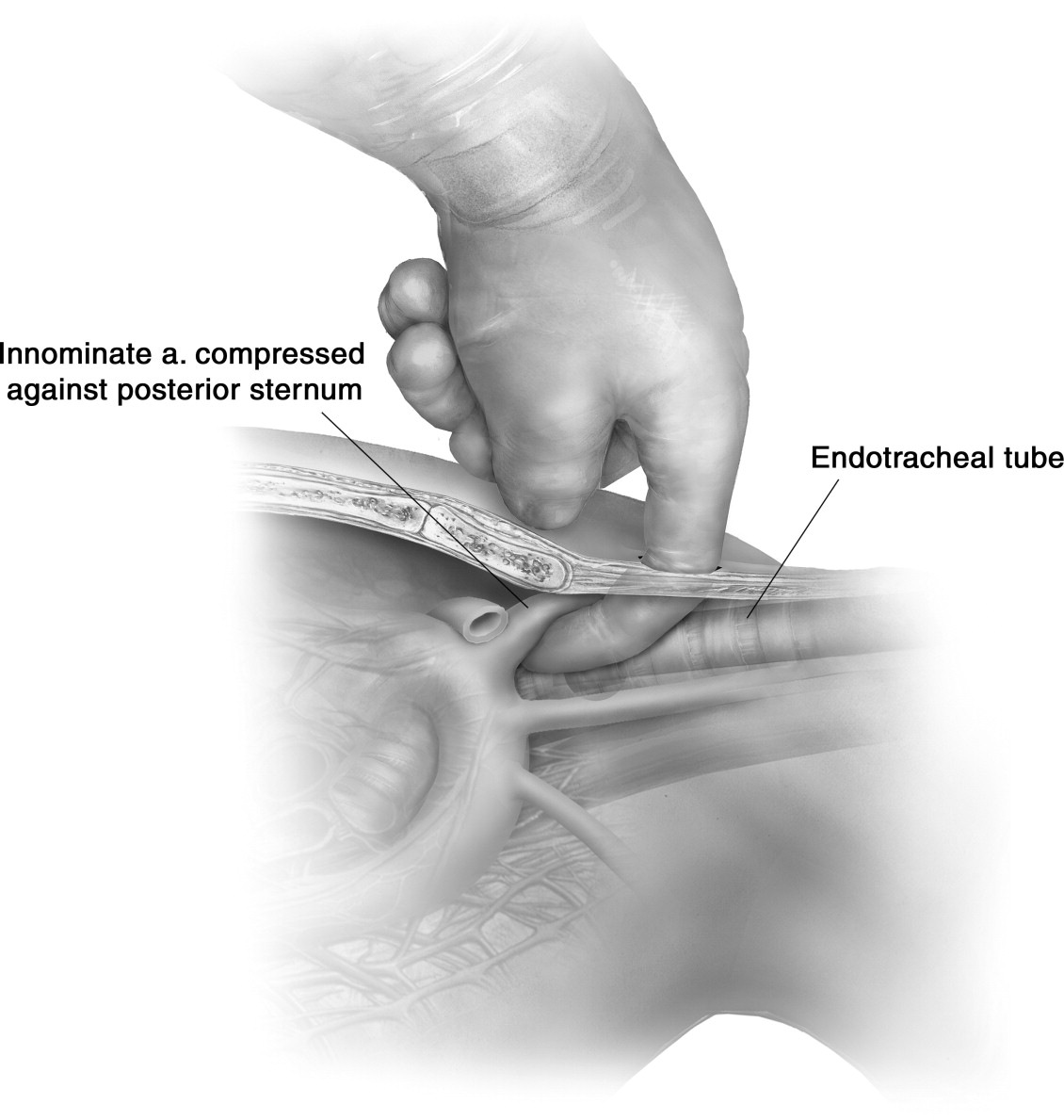Tracheostomy Crises
Loss of Airway
Tracheo-Innominate Fistula
Fistula between trachea and innominate artery occurring due to erosion from the tracheostomy tube or cuff, leading to catastrophic:
The Utley Manoeuvre involves digital compressing the innominate artery against the manubrium to reduce bleeding.
- Place finger through stoma
This may require lateral and inferior extension of the incision to gain access. Consider inserting a Foley catheter as an alternative. - Blunt dissect anterior to the tracheal wall to create a plane between the trachea and the innominate artery
- Compress artery against manubrium
Artery can be identified by pulsation.

- Airway soiling with arterial haemorrhage
- Air entrainment and embolism
- Death
In over 90% of cases.
Tracheo-innominate fistula is a crisis. Priorities are:
- Control haemorrhage and reduce airway soiling
Methods:- Overinflate the tracheostomy cuff
- Intubate from above
May not be an option if the patient has had the laryngectomy. - Digital compression
- Call a surgeon
A tracheo-innominate fistula is:
- Rare, ~0.1-1%
- Occurs between 3 days and 6 weeks following insertion
Peak incidence 7-14 days. - Associated with various risk factors:
- Procedural
- Low insertion site or mediastinal tracheostomy
Innominate artery at level of 9th tracheal ring. - Surgical tracheostomy
- Hyperextension during insertion
- Low insertion site or mediastinal tracheostomy
- Equipment
- Over-inflated cuff
- Anteriorly-curved tracheostomy tube
- Patient
- Poor wound healing
- Procedural
- Proceeded by a herald bleed in 50% of cases1
Definitive management will be surgical:
- May require a sternotomy, and cardiac surgery involvement
- The innominate artery will usually be ligated due to the high risk of recurrent bleeding
- Stenting the innominate may be an option, but is centre and skill-mix dependent
- Aim SBP 120-140 post-operatively to minimising rebleeding
References
- Ailawadi, Gorav. “Technique for Managing Tracheo-Innominate Artery Fistula.” Operative Techniques in Thoracic and Cardiovascular Surgery 14, no. 1 (March 1, 2009): 66–72. .
This has the excellent figure used in the margin note above. - Donaldson, Lachlan, and Raymond Raper. “Successful Emergency Management of a Bleeding Tracheoinnominate Fistula.” BMJ Case Reports 12, no. 12 (December 2019): e232257. https://doi.org/10.1136/bcr-2019-232257.
This terrifying case report begins:
“Thirty days following the insertion of the original tracheostomy, small amounts of blood-stained secretions and tracheal aspirates were noted for the first time.
Later that evening, spontaneous massive haemorrhage via the tracheostomy stoma, the tracheostomy tube and the mouth occurred.”↩︎